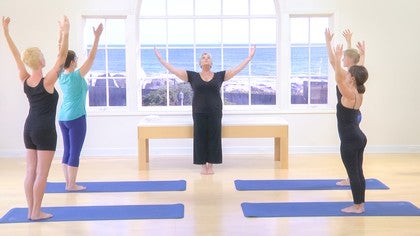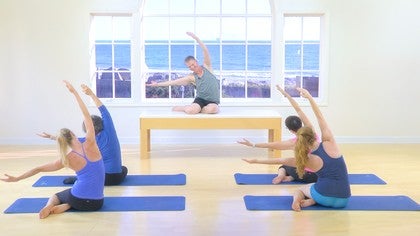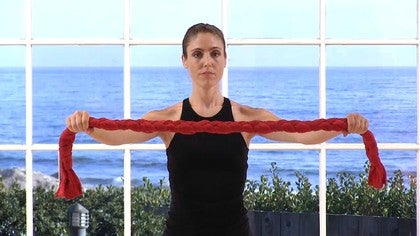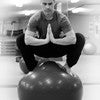Description
About This Video
Transcript
Read Full Transcript
I just want to give you a sense of how the, the Fletcher tell work and especially the Fletcher prey to tell was developed. Um, one day Ron was in his studio in Beverly Hills and he asked one of his clients to please lift her arms over her head. And so she lifted her arms over her head and one shoulder was up, one shoulder was up, and then one shoulder was forward. And then the next time the spine twisted as the shoulders lifted. And he said, I had 50 different versions of wrong and not one version of right.
And so just the act of lifting the arms with symmetry over the head, maintaining the alignment through the body is a difficult thing to do. And so Ron reached for a towel. He had many towels in his studio and he took the towel and folded it in half and folded it in half again, and then twisted it. And he handed it to his client and he asked the client with a mirror in front of her to please lift the towel over her head and create a straight line. And so she could see in the mirror that one shoulder was lifted.
It gave her a lot of feedback and it actually gave her something to stabilize the upper body against. And then from that very simple initiation, he asked the client to engage the towel or pull the child taught so that we felt this, this engagement all along the outside of the arm into the back, into the middle back. And that was the initiation of the Fletcher tell work. This became rather cumbersome. So especially when we started to do come into a second position tab, especially as we started to come into um, lateral flection and we did all sorts of work bending the spine to the side and then come to the other side and then come up and go to the first signed. And then Ron added a release of the underneath arm, sweeping the arm forward and back.
And so that wonderful twist that we had on the tail was lost. And then all of the students in class would have to pre gather the towel lifted up, re twisted and press it down. And so Ron had the idea to braid the towel so that it wouldn't come apart. And the first house that we had were white rated towels and the signature Fletcher color has always been branch. And so, um, Robin asked one of the students in our program at the time to create a red braided towel and he gave those the specifications and the length that give that he wanted. So this is the Fletcher braided towel and I'll just test step to do a few movements with the Fletcher braided towel.
What's wonderful about it is it has just the right amount of give to it. So pulling the tail on so it's not like a Dinah band, which would release
That's so easy to see if the alignment is offer on come out to a second position. And then from here, what we talk about is we talk about this clean negative space between the tail, the arms and the head. And what she does is she bends her spine as she takes that space over to the side and brings it back up to center and takes it over to the other side and, and back up to center. And then if we do the same arm release to the first side, reaching over to the side and then release the bottom arm and notice how the tail maintains its integrity and re
Pilates Legacy Project: Ron Fletcher Practices
Comments
You need to be a subscriber to post a comment.
Please Log In or Create an Account to start your free trial.

























